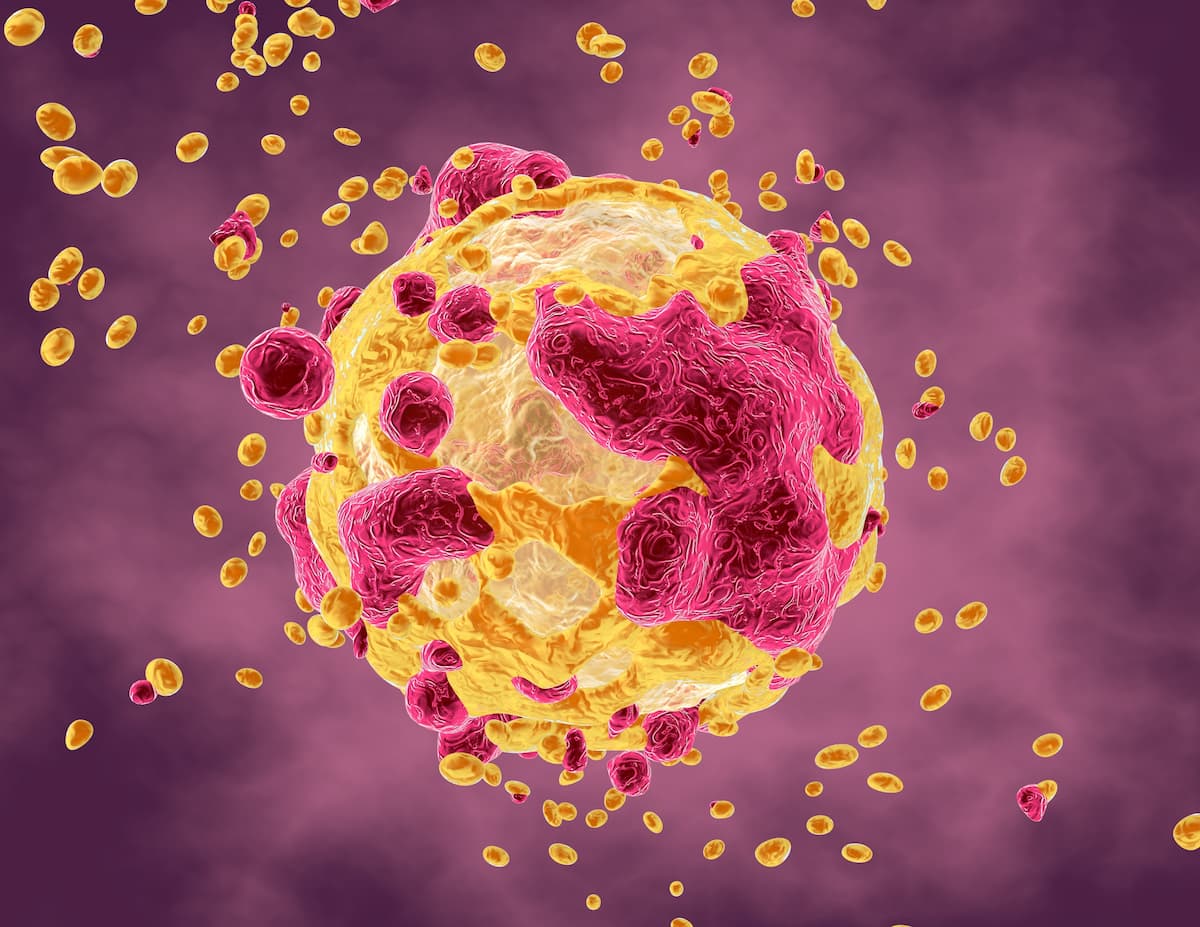Neoadjuvant Pembrolizumab Plus RT May Enhance DFS Outcomes in Sarcomas
The SU2C-SARC032 study evaluating pembrolizumab plus radiotherapy and surgery found the regimen was well tolerated with infrequent surgical complications.
The SU2C-SARC032 study evaluating pembrolizumab plus radiotherapy and surgery found the regimen was well tolerated with infrequent surgical complications.

Neoadjuvant pembrolizumab (Keytruda) in combination with radiotherapy and surgery enhanced disease-free survival (DFS) compared with placebo for patients with stage III undifferentiated pleomorphic sarcoma or dedifferentiated liposarcoma of the extremity, according to findings from the phase 2 SU2C-SARC032 (NCT03092323) trial published in The Lancet.1
Data revealed that the pembrolizumab regimen demonstrated a 39% improvement in DFS (HR, 0.61; 90% CI, 0.39-0.96). The 2-year DFS benefit in the pembrolizumab group was 67% (90% CI, 58%-78%) vs 52% (90% CI, 42%-62%) in the control group (one-sided stratified log-rank P = .035).
“SU2C-SARC032 is, to our knowledge, the first [randomized] trial examining the role of adding immune checkpoint blockade to radiation therapy and surgery in patients with high-risk, [localized] soft tissue sarcoma of the extremity,” David G. Kirsch, MD, PhD, senior scientist at the Princess Margaret Cancer Centre and Peter Shelagh Godsoe Chair in Radiation Medicine, in Toronto, Ontario, Canada, and coinvestigators wrote in the publication. “The trial showed a clinically meaningful improvement in disease-free survival with the addition of preoperative and postoperative pembrolizumab to preoperative radiation therapy and surgical resection for patients with stage III undifferentiated pleomorphic sarcoma or liposarcoma in the extremity or limb girdle.”
The phase 2 SU2C-SARC032 trial randomized 143 patients 1:1 to receive either pembrolizumab, radiation therapy, and surgery (n = 71) or placebo, radiation therapy, and surgery (n = 72), of which 127 completed radiation and were evaluable for DFS; this included 63 in the control group and 64 in the experimental group.
Histology and patient demographics were well balanced between the 2 arms. Respectively, 62% and 64% of patients were male, the median age was 60 and 59 years, and 95% and 80% of patients were White.
Also in the respective arms, 68% and 66% of patients had grade 3 disease, 76% and 83% had undifferentiated pleomorphic sarcoma, and had average tumor size of 10 cm (range, 7-13) and 11 cm (range, 8-14). Additionally, most tumors were located in the lower limb (control, 60%; experimental, 64%) and radiation therapy was mostly conventionally fractionated (97% vs 98%).
Patients in the experimental group received 200 mg intravenous pembrolizumab every 3 weeks for 3 cycles before surgery––before, during, and after radiotherapy treatment––as well as up to 14 cycles after surgery for a maximum of 17 cycles. Pembrolizumab dosing began within 7 days of enrollment and radiation therapy started within 14 days of enrollment in the control group or 1 to 14 days after initial pembrolizumab dose.
Furthermore, most patients received 50 Gy external beam radiation therapy in 25 daily fractions except for 3 patients treated with hypofractionated radiation. Surgery was conducted 3 to 6 weeks after the third pembrolizumab cycle.
Among patients with grade 2 disease evaluable for efficacy analysis, no meaningful DFS difference was observed between cohorts (HR, 0.84; 95% CI, 0.26-2.76; P = .78). By contrast, for patients with grade 3 disease, a significantly longer DFS was observed with the experimental group (HR, 0.57; 95% CI, 0.31-1.03; P = .064).
Additionally, in the modified intent-to-treat population, a nonsignificant overall survival benefit was seen in the pembrolizumab group (HR, 0.67; 95% CI, 0.33-1.39; P = .28).
Of the 70 patients who received at least 1 dose of pembrolizumab, 39 (56%; 95% CI, 44%-67%) had at least 1 grade 3/4 adverse event (AE), and 33 (47%) had at least 1 serious AE. For the control group (n = 67), these occurred in 21 (31%; 95% CI, 22%-43%) and 13 patients, respectively. In the experimental group, 77% had an AE classified on central review as related to pembrolizumab.
Reference
Kirsch DG, Mowery YM, Ballman KV, et al. Safety and efficacy of pembrolizumab, radiation therapy, and surgery versus radiation therapy and surgery for stage III soft tissue sarcoma of the extremity (SU2C-SARC032): an open-label, randomised clinical trial. Lancet. 2024;404(10467):2053-2064. doi:10.1016/S0140-6736(24)01812-9
Sarcoma Awareness Month 2023 with Brian Van Tine, MD, PhD
August 1st 2023Brian Van Tine, MD, PhD, speaks about several agents and combination regimens that are currently under investigation in the sarcoma space, and potential next steps in research including immunotherapies and vaccine-based treatments.